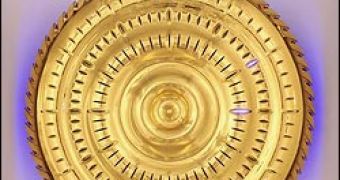John Harrison is said to have been the greatest clockmaker in the world. It took him 36 years to build a clock and he was still adjusting it when he died at the age of 83. Dr. John Taylor followed his example and developed a handless clock that would decorate the exterior of Corpus Christi College in Cambridge.
Its inventor, who studied there, invested £1 million of his own money for the endeavor and it took him 5 years to complete it. The "grasshopper escapement," one of Harrison’s many inventions, is what Taylor used for his own clock. This refers to transferring rotational motion (used for hands) to a pendulum. Taylor opened up Harrison's invention and took a glance inside, in order to understand and mimic the way it worked. For his own creation, he adapted the hidden 35 mm escape wheel to a 1.5 m across one visible from the outside. This is the biggest Grasshopper escapement used for a clock.
The device is powered by an electric motor and, although it has no hands or digital numbers, it does have "a new way to show time, with light," as its creator says. It is provided with a series of slits on its time-showing surface, under which there is a corresponding number of LEDs and lenses. This way, as the escape wheel moves, rapid lights, which are mechanically controlled, travel in concentric circles, stopping at the appropriate hour and minute. The power that animates the clock is less than the one used by 3 bulbs of 60 watt, while its 5 ft (1.5 m) round surface was developed out of stainless steel and its mouldings were shaped by accurate underwater explosions.
Prof. Stephen Hawking, one of the world's greatest cosmologists and prodigious author of many books that made physics more popular (among which is the global bestseller "A Brief History of Time") will unveil the clock on September 19th.

 14 DAY TRIAL //
14 DAY TRIAL //